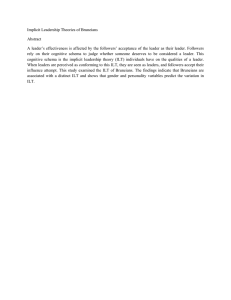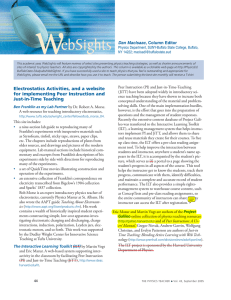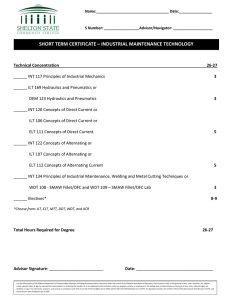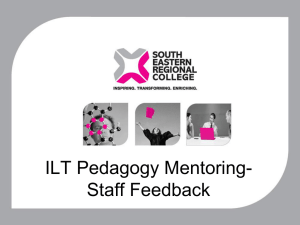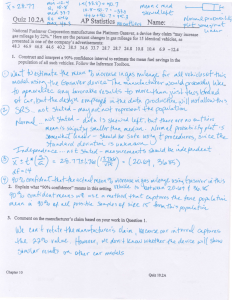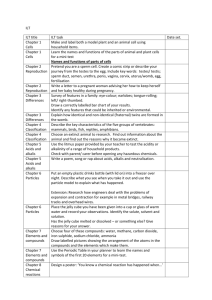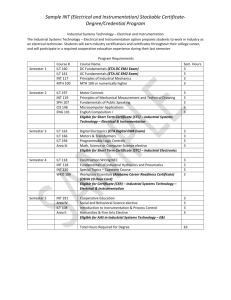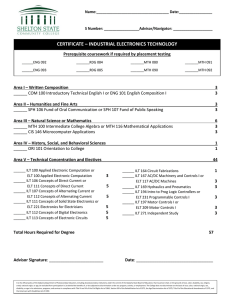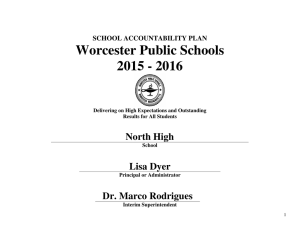GLTS IntegrateEvalCurriculum
advertisement
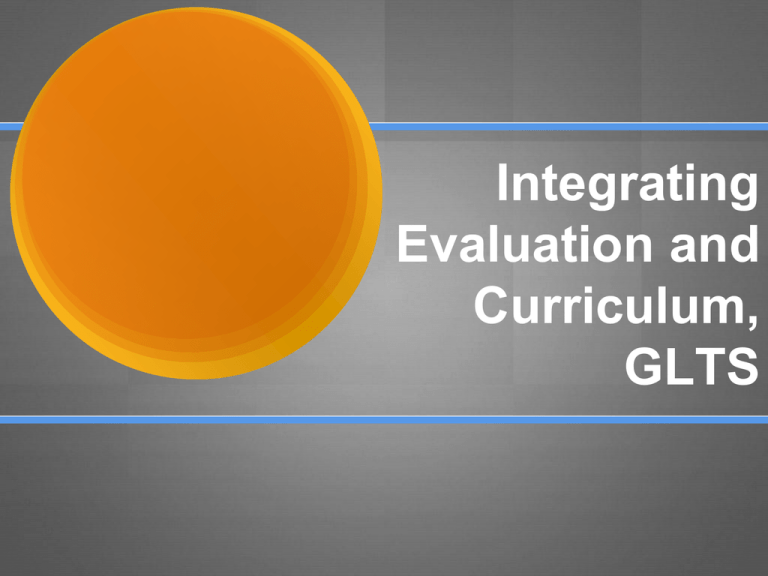
Integrating Evaluation and Curriculum, GLTS Welcome Presenters: • Lauren Jones - Lead Teacher - Carpentry/ Architectural Drafting , ILT member • Paul Mears - Coordinator - Math/Science, ILT member Question and Comments Welcome any time Professional Practice Innovation Grant • DESE • Recognized connection between great curriculum and State Model for Evaluation needed strengthening • GLTS • Recipient among six schools being supported to make connections • Recognized for innovative practices in: • Implementing a collaborative (PLC) approach. • Integrating curriculum and evaluation Our Management Structure for implementing a collaborative (PLC) approach to integrate curriculum and evaluation Instructional Leadership Team (ILT) Implementing a collaborative (PLC) approach The ILT • A monthly collaborative effort between colleagues to ensure student achievement is increased throughout the school • Comprised largely of non-management employees • Charge: • Implement selected School Improvement Plan (SIP) initiatives • Build the capacity of the current Professional Learning Communities (PLCs) • Communication and PD 2013/14: ILT Charter SIP / PPI Grant • Development of Curriculum Structure and Curriculum Software Management System. • School-wide pacing guides and sample unit plans • Make recommendations regarding assessments and grading practices which better support competency/standards - based education ILT Products - Curriculum Philosophy “Curriculum at Greater Lawrence Technical School begins with the end in mind and is designed to reach all learners through rigorous, inquiry based, student centered instruction.” ILT Products - Establishing Common Understandings through Professional Learning Communities Summer of 2013 • • Developed Common language Hyperlink Resource Examples ILT Products - Establishing Curriculum Structure through Professional Learning Communities Daily “Student” Agenda • • • Developed common daily student agenda. Embedded on staff intranet. Live Links to ensure common understandings. ILT Products - Establishing Professional Development and Curriculum Structure Support Designed PD that focused on: • • Mastery Objectives Aligned lessons ILT Products - Establishing continuous communication and effective feedback Peer Observation Results ILT - Next Product Recommend curriculum management software system VS Collaborative Work Support Structure • Weekly Common Planning Time (CPT) meetings: Academic v. Vocational • Embedded Professional Development - ILT driven, team delivered, no incremental cost • Monthly Early Release - curriculum focused • Monthly school-wide Faculty Meetings Evaluation Oversight Committee (EOC) Design team for the new evaluation system The EOC Structure • • Composition: 8 administrative seats, 9 faculty and support staff seats, 1 seat for Massachusetts Federation of Teachers Representative. • Early Adopter School - second year of full implementation, meets monthly EOC Product - Structure for Evaluation Narrowed Focus of Feedback, Simplified Forms, Paperless System • Rubrics - Indicators v. Standards • Measures - five: • • • • • Daily planning (agenda) Quality of Work and Effort (student-led, differentiated.) Feedback on self-assessment weakness and strength Family communication Goals: individual and collaborative • TeachPoint Education Administration Team (Ed Admin) Integrating curriculum and evaluation The Ed Admin Team Structure and Charter • • Responsible for full implementation of evaluation and curriculum system • Comprised entirely of evaluators - 12 for staff of 240 • Meets weekly to fine tune system and increase evaluation skills (calibration) Ed Admin Product - Evaluation Schedule • Last year: 6 observations for everyone • Current year: • 5 observations for new teachers and others on a one year plan • 4 observations for teachers on a two year plan Connecting Evaluation System to Teaching and Learning • The new DESE evaluation system is built on more frequent observation resulting in timely and specific feedback • Answer the following questions (turn and talk): • How many observations are you doing? • What are the essential steps in your observation procedure? • How much time is required to complete an observation? Observation Time Study -GLTS • Short Observation: 30 minutes minimum • Notes Completion: 15-20 minutes • • Follow-up meeting: 30-45 minutes - reading literal notes, gathering curriculum, sharing ideas for improvement Write up: 60-90 minute - Examination of curriculum documents, review of full notes, crafting of C.E.I.J statements, recommendations Total time to connect evaluation and curriculum - 2.5 - 4.0 The Benefits and risks of increasing feedback • Time is required to plan improvement • Be timely and specific • An opportunity to either build or erode trust Thank you Everyone!

